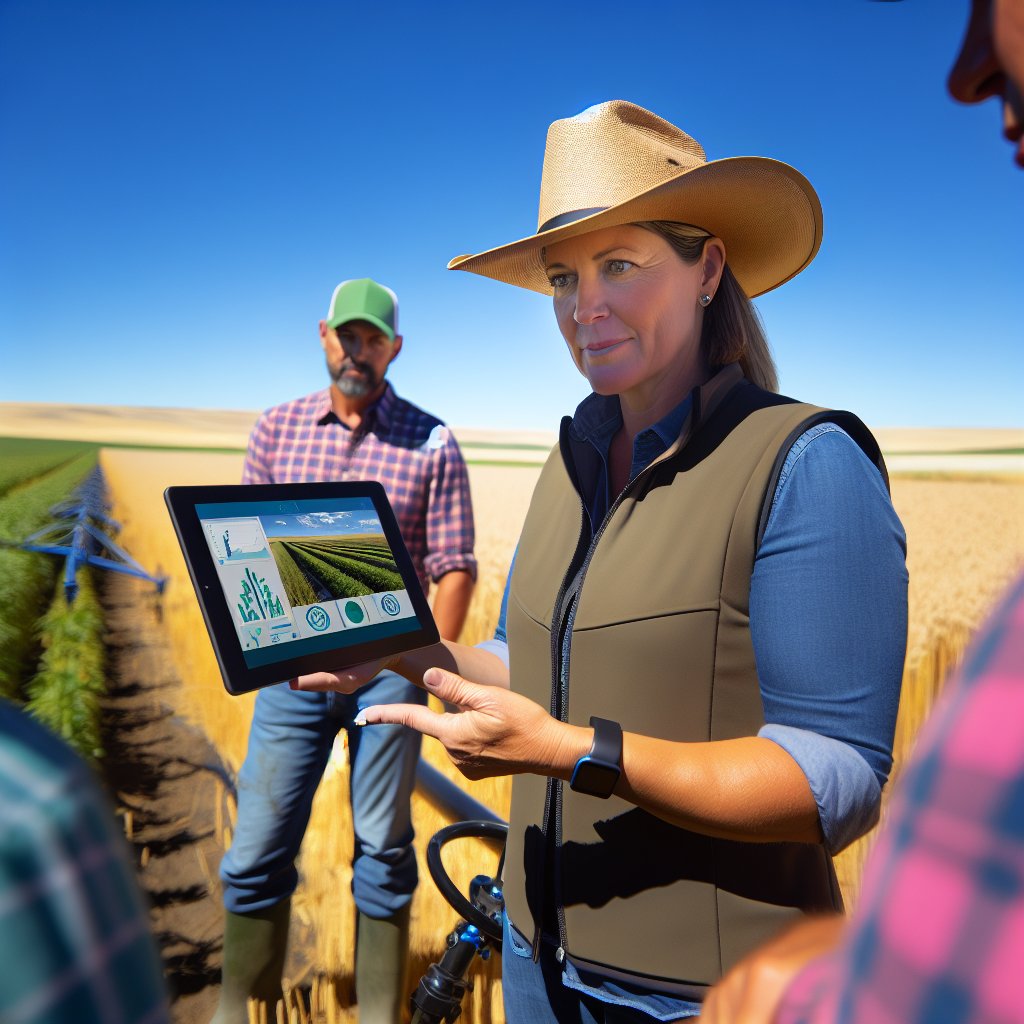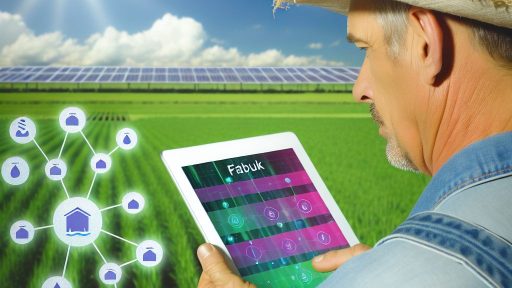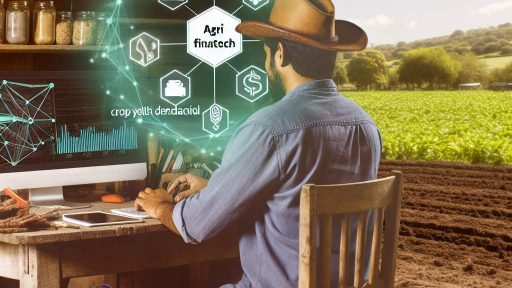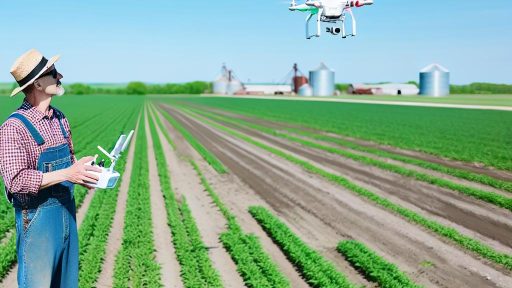Introduction to Advanced Management Software in Agriculture
In recent years, agriculture has seen significant technological advancements.
Advanced management software has emerged as a critical tool for farmers.
This software enhances operational efficiency across various farming activities.
Moreover, it allows farmers to make data-driven decisions quickly.
Benefits of Implementing Advanced Management Software
One key benefit is improved resource management.
Farmers can monitor crop health and soil conditions in real time.
Additionally, this software reduces operational costs through optimization.
By automating tasks, farmers can allocate their labor more effectively.
Furthermore, accurate data analysis helps identify growth opportunities.
Features of Modern Management Software
Modern management software includes features that streamline operations.
Accountability is enhanced through detailed reporting tools.
Farmers can track inventory and manage supply chains efficiently.
Geolocation technology aids in precision agriculture practices.
Additionally, integration with other agricultural tools is common.
Case Studies of Successful Implementation
Many farms have reported significant productivity increases after adopting this software.
Transform Your Agribusiness
Unlock your farm's potential with expert advice tailored to your needs. Get actionable steps that drive real results.
Get StartedThe Thompson Farm increased yields by 20% within the first year.
Another example is Green Horizon Farms, which cut costs by 15% using advanced analytics.
These success stories highlight the potential benefits for many operations.
Challenges in Adopting Management Software
Despite its advantages, some challenges exist in implementation.
High initial costs can deter smaller farms from investing.
Additionally, training staff to effectively use the software requires time.
Farmers may also struggle with technology adoption due to skepticism.
Future Trends in Agricultural Management Software
The future of agricultural management software looks promising.
Emerging technologies like AI and machine learning are becoming more prevalent.
These advancements will likely enhance predictive analytics capabilities.
As software becomes more user-friendly, adoption rates will increase.
Ultimately, such innovations will further enhance farm productivity.
Benefits of Implementing Management Software on Farms
Streamlined Operations
Management software simplifies daily farm operations.
This technology reduces time spent on administrative tasks.
Farmers can focus more on critical farming activities.
Enhanced Data Management
Advanced software allows for better data collection.
This data aids in making informed decisions.
Farmers can track crop yields, weather patterns, and soil health effectively.
Resource Optimization
Management software helps in optimizing resource use.
Farmers can manage water, fertilizers, and seeds more efficiently.
As a result, costs can decrease while productivity increases.
Improved Financial Management
Software solutions provide financial tracking tools.
Farmers gain insights into expenses and profits promptly.
They can also forecast budgets for future seasons.
Showcase Your Farming Business
Publish your professional farming services profile on our blog for a one-time fee of $200 and reach a dedicated audience of farmers and agribusiness owners.
Publish Your ProfileBetter Communication
These systems enhance communication among farm staff.
Farmers can share updates and manage labor more effectively.
Real-time communication improves teamwork and efficiency.
Environmental Sustainability
Management software supports sustainable farming practices.
Farmers can monitor their environmental impact closely.
They can implement strategies that promote ecological balance.
Key Features of Effective Farm Management Software
User-Friendly Interface
An intuitive design helps users navigate easily.
This feature minimizes training time for staff.
A user-friendly interface increases adoption rates among farmers.
Data Integration
Effective software integrates various data sources seamlessly.
This includes combining information from GPS systems and sensors.
A cohesive data environment enhances decision-making capabilities.
Real-Time Monitoring
Real-time monitoring allows farmers to track operations efficiently.
It provides instant updates on crop conditions and livestock health.
Consequently, this feature enables quick responses to emerging issues.
Financial Management Tools
Robust financial tools aid in budgeting and expense tracking.
Farmers can analyze profitability through comprehensive reports.
These tools empower better financial decisions to enhance profitability.
Automated Reporting
Automated reporting simplifies compliance with regulatory standards.
This feature saves time and reduces human error in reporting.
Farmers focus more on their core activities with less administrative burden.
Mobile Access
Mobile access ensures farmers can monitor operations on-the-go.
With smartphone compatibility, farmers stay connected wherever they are.
This flexibility enhances productivity and responsiveness to tasks.
Valuable Analytics
Analytics tools provide insights into farm performance.
This data helps identify trends and optimize resources effectively.
As a result, farmers can make informed strategic decisions.
Scalability
Effective software scales according to farm size and complexity.
It accommodates growth without significant additional costs.
This adaptability supports long-term planning for expanding operations.
Discover More: Understanding Agri-Fintech Services For Sustainable Farming Practices
Case Studies: Successful Adoption of Management Software
FarmTech Innovations
FarmTech Innovations implemented a management software solution last year.
This software provided real-time data analytics to track crop growth.
As a result, FarmTech improved decision-making processes significantly.
The team adjusted irrigation schedules based on soil moisture data.
This adjustment reduced water usage by thirty percent.
Consequently, crop yields increased by fifteen percent in one season.
Green Acres Farms
Green Acres Farms embraced advanced management software in 2022.
The system integrated various aspects of farm operation seamlessly.
Inventory management became more efficient and error-free.
Showcase Your Farming Business
Publish your professional farming services profile on our blog for a one-time fee of $200 and reach a dedicated audience of farmers and agribusiness owners.
Publish Your ProfileFarmers accessed tools to monitor livestock health instantly.
As a result, the farm recorded a decrease in animal diseases.
Productivity levels rose alongside improved health outcomes.
Sunny Fields Cooperative
Sunny Fields Cooperative explored software solutions to enhance collaboration.
Members utilized the platform to share resources and information quickly.
This sharing improved communication among cooperative farmers.
Consequently, the farmers coordinated better during peak seasons.
The cooperative achieved a twenty-five percent increase in overall efficiency.
Furthermore, members reported greater satisfaction with collective operations.
Mountain View Organic Farm
Mountain View Organic Farm focused on sustainability with software assistance.
The management system tracked organic certification requirements closely.
Farmers accessed vital data regarding pesticide usage and crop rotation.
This tracking ensured compliance with organic farming standards.
As a result, product quality improved significantly.
In turn, market sales surged, benefiting the farm financially.
Riverbend Orchards
Riverbend Orchards implemented management software specifically for orchards.
The system provided insights into pest management and fertilization techniques.
Farm staff adjusted practices based on accurate historical data.
This adjustment led to healthier trees and higher fruit yields.
Moreover, customer satisfaction improved as a result of quality growth.
Consequently, the orchard expanded its customer base regionally.
Discover More: Harnessing Geothermal Energy for Farm Operations
Integrating IoT Devices with Management Software for Real-time Data
The Role of IoT in Agriculture
The Internet of Things (IoT) revolutionizes farming practices.
Farmers utilize IoT devices to gather real-time data on crop health.
These devices include sensors for soil moisture and weather conditions.
As a result, farmers can make data-driven decisions.
Benefits of Real-time Data Integration
Integrating IoT with management software enhances operational efficiency.
This integration allows for immediate responses to changing conditions.
For instance, farmers can adjust irrigation based on current soil moisture levels.
Moreover, they can monitor equipment performance in real-time.
Choosing the Right Management Software
Selecting appropriate management software is crucial for success.
Farmers should look for platforms that support IoT integration.
Features like user-friendly dashboards improve decision-making processes.
Additionally, cloud-based systems ensure data accessibility anytime, anywhere.
Case Studies of Successful Implementations
Many farmers experience success through IoT integration.
For example, Adam’s Dairy Farm reduced water usage significantly.
They implemented soil moisture sensors linked to their management software.
Likewise, Green Acres Farm uses weather data to optimize planting schedules.
Future of IoT in Farming
The future promises even more advancements in IoT technology.
As devices become smarter, they will gather more complex data.
Showcase Your Farming Business
Publish your professional farming services profile on our blog for a one-time fee of $200 and reach a dedicated audience of farmers and agribusiness owners.
Publish Your ProfileFarmers will gain insights that were once unimaginable.
Ultimately, this evolution will lead to sustainable farming practices.
Uncover the Details: Agri-Fintech: Bridging The Gap Between Farmers And Financial Services

Selecting the Right Software for Your Farm Size and Type
Understanding Your Needs
Identifying your specific farming needs is the first step in selecting management software.
Consider the type of crops or livestock you manage.
Evaluate your farm’s size and the complexity of operations.
Take note of any unique challenges you face in daily management.
Assessing Farm Size
Your farm size significantly influences the software you choose.
Smaller farms may benefit from simpler, budget-friendly solutions.
Large-scale operations often require more robust systems with advanced features.
Additionally, consider scalability to accommodate future growth.
Considering Farm Type
The type of farming you engage in also matters.
Crops and livestock have distinct management needs and challenges.
A crop-focused farm might prioritize planting and harvest tracking.
A livestock operation requires software for health monitoring and breeding management.
Evaluating Key Features
Focus on essential features when choosing software.
Look for inventory management, financial tracking, and reporting capabilities.
Integration with existing tools enhances efficiency in operations.
Mobility features allow you to manage tasks on the go.
Budget Considerations
Your budget plays a critical role in selecting the right software.
Consider both the initial investment and ongoing maintenance costs.
Some options offer subscription models that lower upfront costs.
Evaluate the return on investment to justify expenses.
Seeking User Feedback
Gather feedback from other farmers using specific software solutions.
Online reviews provide insights into user experiences and satisfaction.
Attending agricultural trade shows can also facilitate networking.
Consulting with fellow farmers can guide you in making the right decision.
Trial and Testing
Take advantage of free trials offered by software providers.
Testing software firsthand allows you to assess usability and functionality.
Engage your team to see how the software fits into daily tasks.
Make adjustments based on feedback from your staff.
Uncover the Details: Smart Farming Tools Boosting Efficiency and Sustainability on Farms
Training and Support for Farm Staff in Using Management Tools
Importance of Training
Effective training improves staff competence with management software.
Additionally, it strengthens their problem-solving skills.
Well-trained staff can maximize the software’s capabilities.
This leads to increased farm productivity and efficiency.
Types of Training Programs
Structured training programs are essential for farm staff.
Hands-on workshops offer practical experience with the tools.
Online courses provide flexibility and accessibility for all employees.
Mentorship programs pair experienced users with beginners.
Showcase Your Farming Business
Publish your professional farming services profile on our blog for a one-time fee of $200 and reach a dedicated audience of farmers and agribusiness owners.
Publish Your ProfileHands-on Workshops
Workshops provide real-time experience in a controlled environment.
Instructors can address specific questions directly.
Participants gain confidence in using the software efficiently.
Online Courses
Online training allows staff to learn at their own pace.
These courses can cover a wide range of topics.
Staff can revisit materials as needed for better understanding.
Implementing Mentorship Programs
Pairing new staff with experienced mentors fosters knowledge sharing.
This practice enhances learning and builds camaraderie.
It also promotes a culture of continual improvement on the farm.
Ongoing Support and Resources
Providing ongoing support is crucial for continued success.
Regular follow-up sessions can reinforce training concepts.
Establishing a help desk ensures staff can get immediate assistance.
Access to online resources creates a self-help environment.
Follow-up Sessions
Scheduled reviews keep staff updated on new features.
These sessions encourage discussion and feedback among users.
They also help identify any recurring problems.
Help Desk Solutions
A dedicated help desk offers personalized support for staff.
This service helps resolve issues quickly and efficiently.
Consequently, it minimizes downtime due to technical problems.
Online Resource Access
Providing online guides and FAQs empowers staff to learn independently.
These resources can offer insights into advanced features.
Moreover, they reinforce skills learned during initial training.
Future Trends: The Evolution of Farm Management Software
Technological Advancements
Farm management software constantly adapts to technological progress.
Automation plays a crucial role in enhancing farm operations.
Additionally, artificial intelligence improves data analysis and decision-making.
Furthermore, the Internet of Things (IoT) enables real-time monitoring of farm conditions.
Farmers increasingly rely on drones to assess crop health and optimize yields.
User-Friendly Interfaces
Software developers prioritize user experience in their design.
Intuitive interfaces attract more users, including non-tech-savvy farmers.
Moreover, mobile applications offer convenience and flexibility in management.
Farmers can access vital information anywhere, making on-the-go decisions easier.
Data-Driven Decision Making
Data analytics drives the evolution of farm management software.
Farmers now collect vast amounts of information for better planning.
Predictive analytics helps identify potential challenges before they arise.
Consequently, farmers can implement proactive measures for improved outcomes.
Sustainability Focus
Environmental sustainability increasingly influences farm management strategies.
Software provides tools to track resource usage and reduce waste.
Farmers can optimize inputs like water and fertilizers to lessen environmental impact.
As a result, sustainable practices enhance both productivity and ecological health.
Integration with Other Systems
The future of farm management software lies in seamless integration.
Showcase Your Farming Business
Publish your professional farming services profile on our blog for a one-time fee of $200 and reach a dedicated audience of farmers and agribusiness owners.
Publish Your ProfileThese systems work cohesively with supply chain management tools.
Furthermore, integration with financial software improves budgeting and forecasts.
This holistic view streamlines operations and enhances overall efficiency.
Community and Knowledge Sharing
Farm management software fosters collaboration among farmers.
Online platforms allow users to exchange best practices and insights.
Networking opportunities strengthen the farming community as a whole.
Consequently, farmers become more resilient through shared knowledge.




